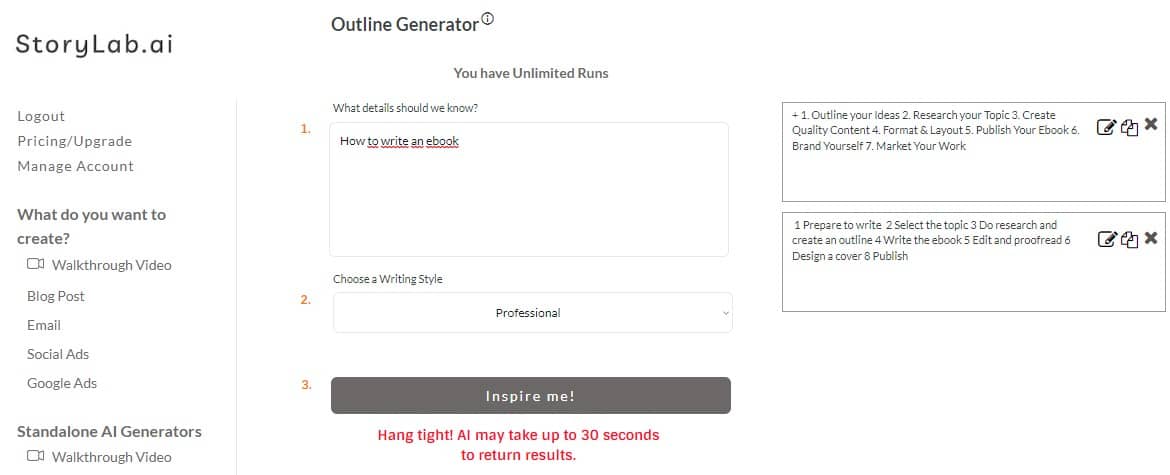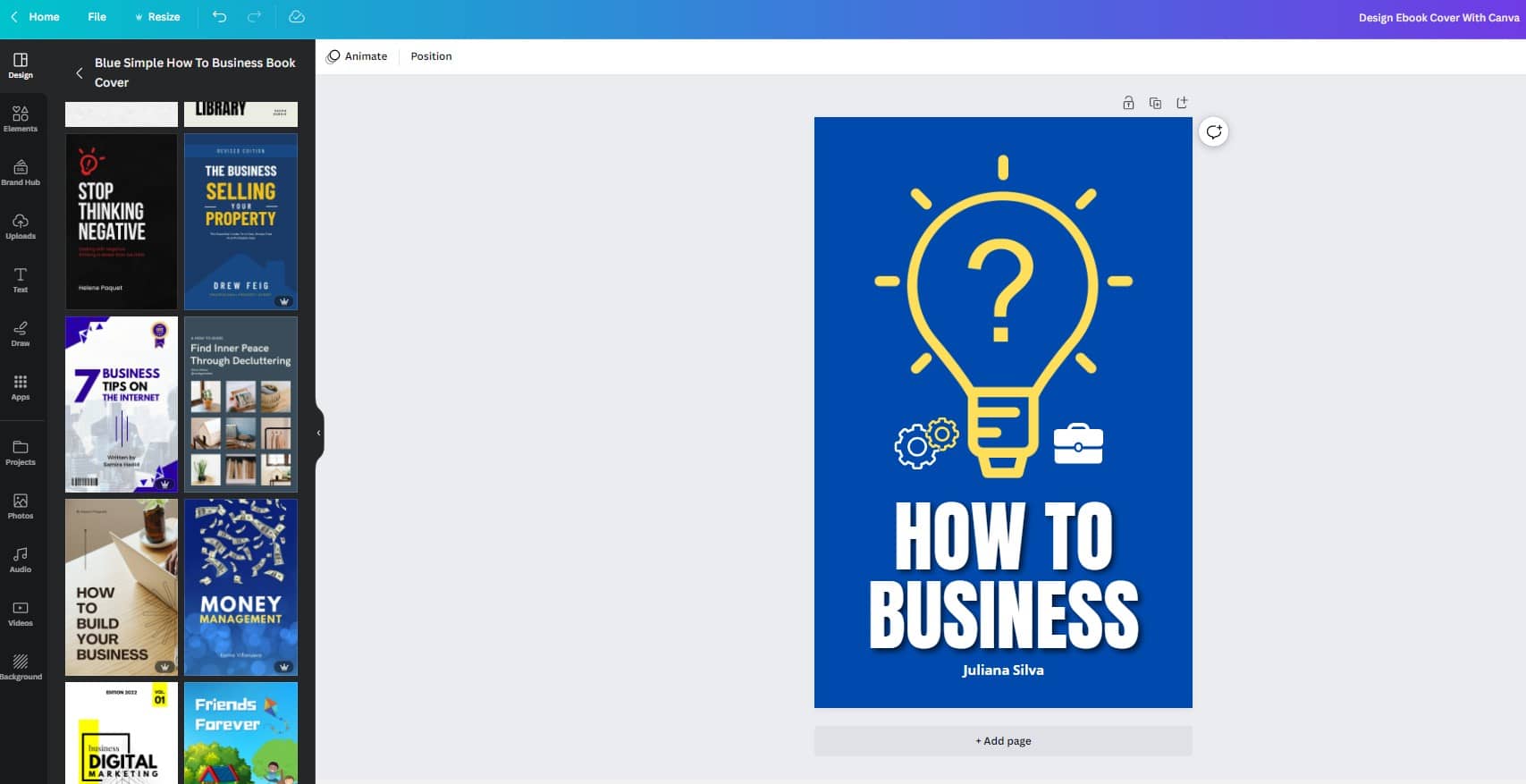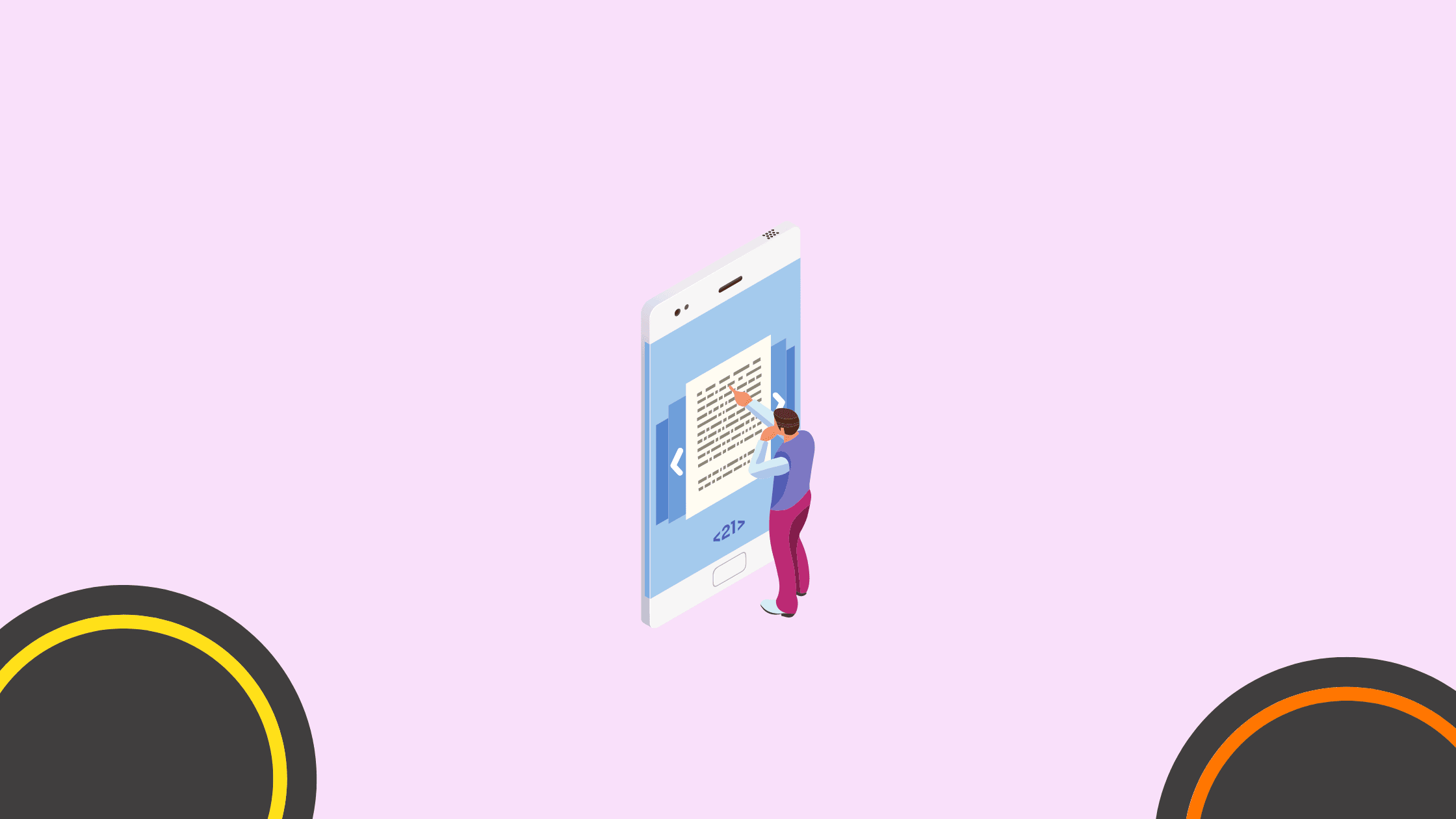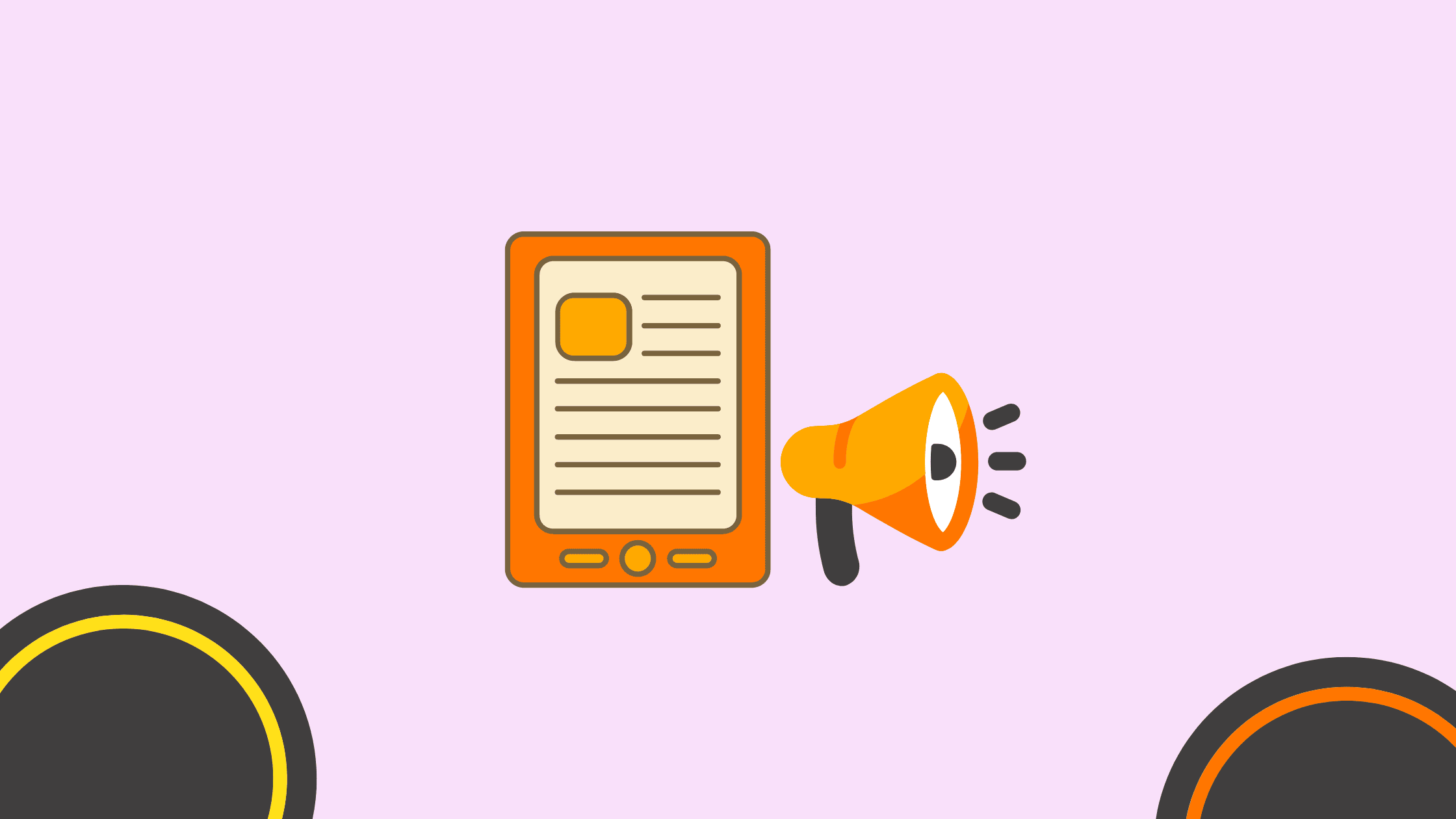How to Write and Format an Ebook With the Help of AI in 2024
Let AI Help you Create your Ebook Faster and Better
Writing an ebook requires a lot of time, effort, and dedication. Let’s see how Artificial Intelligence (AI) can help you create an Ebook better and faster in 2024 with an AI eBook Generator.
No matter if you’re using AI or not, It is important to have a clear understanding of why you want to write an ebook before diving into the writing process.
Most people choose to write an ebook to share their expertise and knowledge on a particular topic.
An ebook is a great way to showcase your writing skills and establish yourself as an authority in your industry. Moreover, an ebook can help you attract and build an audience, generate demand, leads, and sales, and enhance your brand image.
Writing an ebook can also help you stand out from the crowd and differentiate yourself from your competition. By writing an ebook, you can communicate your message clearly and effectively, and provide value to your readers. In addition, an ebook can serve as a passive income stream, allowing you to earn money without putting in much extra effort.
Overall, there are many benefits to writing an ebook, and it is important to know why you want to write one before embarking on the journey.
Choosing a topic for your eBook

Choosing a topic for your ebook is a crucial step in the writing process. Your topic should be something that you are passionate about and have knowledge of. The first step in choosing a topic is to brainstorm a list of potential ideas. Our eBook Idea Generator can help a lot in this step. Think about your interests, hobbies, and experiences. Consider what topics you feel confident in and what topics are popular among your target audience. Once you have a list of potential topics, you can narrow it down by researching the demand and competition for each subject. A good rule of thumb is to choose a topic that has a high demand but low competition. This will give you a better chance of standing out and attracting readers.
Researching your topic
Before starting the actual writing process, researching your topic is an essential step. This allows you to gain an understanding of the scope, depth, and uniqueness of your ideas while also discovering gaps in the existing content online.
Keep in mind that your eBook must offer something new and valuable to readers to stay relevant and engaging in today’s world of online information overload.
Begin by brainstorming ideas for your eBook topic by listing down all the topics, themes, and niches that you’re passionate about or have expertise in. This is the foundation of your eBook, and it is essential that it aligns with your interests and strengths.
After selecting a few potential topics, start researching them with relevant keywords on search engines, social media platforms, and even on your competitors’ websites.
While researching, make sure to keep track of your sources and take notes on interesting ideas, data, and statistics that you can integrate into your eBook content.
This data and information can help you add credibility and value to your topic by offering your readers something new to learn. Don’t just rely on one source for your information and take the time to verify any facts to ensure you provide your readers with correct information.
Another essential aspect of researching your topic is understanding your competitors and their content. This helps you identify gaps in their topics and offering your readers something different.
Analyze their eBook’s content, format, and style while taking notes on what works and what doesn’t to ensure you capture your readers’ interest. This also helps you target readers who are finding it challenging to find what they want to know with current information available.
Remember that an eBook can offer lifelong learning opportunities for people at different stages of their journey, so try to think outside of the box. By researching your topic, you can find unique angles to differentiate your eBook while also adding value to your readers, which can increase your chances of success in the world of online publishing.
Defining your target audience

Defining the target audience for your eBook is one of the essential steps you need to take before embarking on writing.
Knowing your audience is critical because it enables you to tailor your content to meet their specific needs and expectations.
To define your target audience, you should consider several factors, including age, gender, education level, income, geographic location, and interests. By focusing on these factors, you’ll be able to create a profile of your ideal reader, which will guide you in crafting your ebook. In addition to demographics, you should also consider your audience’s pain points, aspirations, and motivations. Understanding these factors will help you identify the topics that are most relevant and compelling to your readers.
Furthermore, it will enable you to create content that resonates with them on a deeper level. Finally, you should also consider how your readers consume content. Are they avid readers who prefer long-form content, or do they prefer short-form content with lots of visuals?
Understanding their preferences will help you decide on the best format for your ebook.
Setting goals for your ebook
Setting goals for your ebook is an essential step in the ebook creation process. It involves identifying what you want to achieve with your ebook and setting specific, measurable, achievable, relevant, and time-bound goals.
The goals you set should align with your overall objectives and be relevant to your target audience. One critical aspect of setting goals for your ebook is defining your financial objectives. Do you intend to make money from your ebook? If so, how much do you plan to earn? Additionally, you should set goals related to the quality and quantity of content you intend to produce. For instance, you can set a goal to publish a 10,000-word ebook in three months or to create a comprehensive guide that covers all aspects of a particular topic.
Another critical aspect of setting goals for your ebook is defining your conversion objectives. Do you want your ebook to serve as a lead magnet to attract potential customers to your business? If yes, you should set goals related to the number of leads you want to generate. You can also set goals related to the number of downloads, views, shares, or likes you want to get on your ebook.
By setting clear and specific goals for your ebook, you can monitor and evaluate your progress and adjust your strategy accordingly. Furthermore, having specific goals can help you stay motivated and focused throughout the ebook writing process.
In conclusion, setting goals for your ebook is an essential step that should not be overlooked. By setting specific and measurable goals, you can align your efforts with your overall objectives and ensure that your ebook meets the needs of your target audience. Remember to define your financial, content, and conversion objectives and monitor your progress as you work towards achieving them.
Planning

Creating an outline for your Ebook with the help of AI
Creating an outline is the first step that a writer should take when preparing to write an ebook. AI can help. The outline is the foundation upon which the ebook will be written. It provides the eBook writer with a clear blueprint of the structure of the ebook and helps to keep their thoughts organized. The outline should include the major sections of the ebook, as well as the sub-sections that will be covered. The writer should consider the target audience for the ebook and ensure that the content is relevant and interesting to them.
When creating an outline, it is important to start with a clear idea of the main goal of the ebook. This goal should be reflected in the title, which should be clear and concise. The title should be followed by a brief introduction that sets the stage for the ebook and introduces the reader to the main ideas that will be explored. The outline should then proceed with the major sections of the ebook and the sub-sections that will be covered. Each section should have a clear purpose and should contribute to the overall goal of the ebook.
The writer should also consider the flow of the ebook and how each section and sub-section fits together. The outline should include transitional sentences or phrases that link the sections together and help the reader move smoothly from one idea to the next. The writer should consider using bullet points or numbering to further organize the outline and make it more visually appealing.
To ensure that the outline is comprehensive, the writer should conduct research and gather sources that will support their ideas. They should use these sources to create a list of key points that will be included in each section and sub-section of the ebook. The outline should also include any diagrams, illustrations, or other visuals that will be used to enhance the reader’s understanding of the content.
Overall, creating an outline is an essential part of preparing to write an ebook. The outline provides the writer with a clear vision of what the ebook will be about and how it will be structured. It also helps to keep the writer’s thoughts organized and ensures that the ebook is focused and relevant to the target audience.
Using an AI-Powered Outline Generator for your Ebook
Now let’s have a look at how an AI-Powered Outline Generator can help smoothen the process. We do not advise using the AI Outline Generator for the entire ebook. Break your ebook down into smaller sections and use the AI tool to create subsections. For this example, we’re going to create an outline with the help of AI for a subsection about ‘writing an ebook’. Our input was ‘How to write an ebook’. Here’s what the AI tool generated for us:

Organizing your ideas
Organizing your ideas is a crucial step in preparing yourself for writing an ebook. Before you begin putting words on paper, it is essential to have a clear plan in place. Start by brainstorming all of your ideas and jotting them down on paper or a digital document. Also here, AI can be a big help. Once you have exhaustively brainstormed, it is time to organize those ideas into a coherent outline. The outline should include a clear and concise introduction, body, and conclusion, with each section further divided into subsections as needed. Additionally, each subsection should have a clear topic sentence with supporting evidence to reinforce your main ideas. By creating a robust outline, you can ensure you stay on track while writing and avoid getting sidetracked by tangential thoughts.
One helpful strategy when organizing your ideas is to group similar ideas together. This strategy can help you avoid repeating yourself and make sure all the necessary ideas are covered only once in the ebook. Grouping ideas together can also make it easier to create a logical flow from one idea to another, leading to a more cohesive and well-structured ebook. Another helpful tip is to number each idea in your outline, which will make it easier to identify thought patterns and make revisions later on. Remember, the goal is to create a structure that you can follow when sitting down to write, so the more detail and organization your outline has, the less time you will spend trying to figure out what to say and how to say it.
While organizing your ideas may seem like a daunting task, it is essential to consider the benefits of doing so before actually beginning to write. Organizing your thoughts and ideas helps to increase productivity, making the writing process itself quicker and more efficient. Having a clear plan in place also helps to reduce anxiety and overwhelm, allowing your creativity to flourish. Furthermore, creating an organized outline can help you identify potential issues early on, so you can address them before they become bigger problems as well as ensure that you stay on topic and don’t stray into irrelevant areas.
Overall, organizing your ideas may initially seem like an additional step in an already lengthy process, but it has clear payoffs in terms of streamlining the writing process and achieving a coherent and effective end result. By taking the time to create a clear and concise outline, you can set yourself up for success, establish a writing routine, and maintain focus on the ebook’s primary goal–providing value to and engaging with readers.
Developing a writing schedule

Developing a writing schedule is crucial for ensuring that you complete your ebook within a reasonable timeframe. Without a schedule, it can be easy to procrastinate and lose motivation, leading to a delay or abandonment of your project. The first step towards creating a writing schedule is to determine your daily writing goal. This could be a certain number of words, pages, or even a specific amount of time spent writing each day. Once you have established your goal, it is important to schedule your writing time at a consistent time each day. This will help you develop a routine and make writing a habit.
It is also essential to consider your other commitments when creating your writing schedule. Make sure to set realistic expectations for yourself and your writing schedule. If you have a busy day, adjust your writing goal accordingly. It’s better to consistently meet a smaller goal than to consistently fail to meet a larger one.
Another helpful tip is to break up your writing into shorter sessions throughout the day. For example, you could write for an hour in the morning, take a break, and then write for another hour in the afternoon. This can help prevent burnout and keep your writing fresh.
Finally, be willing to adjust and adapt your writing schedule as you go. Life is unpredictable, and there may be times when you need to shift your schedule around to accommodate unexpected events. The key is to stay flexible while still maintaining your commitment to your writing project.
Setting deadlines
Setting deadlines is an essential part of preparing yourself for writing an ebook. When creating a writing schedule, it is crucial to set up realistic deadlines for each chapter or section of your book. The eBook Chapter Generator can help meet deadlines more easily.
Breaking down your writing process into smaller steps and setting deadlines for each of them will help you stay organized and motivated. Without concrete deadlines, it is easy to procrastinate and lose track of your progress. Setting deadlines also creates a sense of accountability, as you will know exactly what you should be working on and when.
Additionally, having a deadline in mind can help you plan your time better, so you can fit writing into your schedule without compromising on other important activities. When setting deadlines, it is important to be realistic and to consider your other commitments and responsibilities.
Be sure to give yourself enough time to complete each task without rushing or sacrificing quality. It is also a good idea to build in some buffer time in case unexpected events come up or you need to make revisions.
Remember to celebrate your successes as you reach each deadline, as this can help keep you motivated and encouraged throughout the writing process.
Start writing your eBook

Getting started
Before diving into the actual writing process of your ebook, it’s crucial to get started on the right foot. This involves a few key steps that can make a significant impact on the quality and success of your final product. First and foremost, you should conduct thorough research on your chosen topic. This includes learning about your target audience, identifying potential gaps in existing literature, and staying up-to-date on any relevant industry trends. Once you have a solid understanding of your subject matter, you can begin outlining your ebook. This process should involve breaking down your main points into manageable sections and determining the most effective way to convey your message to readers.
Another key aspect of getting started on your ebook is establishing a writing routine and setting achievable goals. This can include scheduling specific blocks of time for writing each day or week, utilizing productivity tools such as time-management apps or software, and creating realistic deadlines for yourself. Additionally, it’s important to eliminate any potential distractions or sources of procrastination from your workspace. This might involve finding a quiet, dedicated location to write or using tools like noise-cancelling headphones to block out external distractions.
Finally, the last step in getting started on your ebook is to gather any necessary resources or materials. This might include conducting additional research, compiling relevant statistics or data, and sourcing images or other media to enhance your content. By taking the time to systematically approach the pre-writing stage, you can set yourself up for success and ensure that your finished product is well-researched, organized, and effectively communicates your message to readers.
Writing tips and techniques
Writing an ebook can be a rewarding experience, but it can also be a daunting task. If you’re struggling to start, there are several writing tips and techniques that can help you get on the right track. First and foremost, it’s important to know your audience. Who are you writing for? What are their interests, needs, and pain points? Once you have a clear understanding of your audience, you can tailor your writing to address their needs and interests.
Another important writing technique is to create an outline. This will help you organize your thoughts and ensure that your ebook has a clear and logical story structure. Your outline should include a table of contents, an introduction, several chapters, and a conclusion. Each chapter should have a clear and concise purpose, and all of your ideas should flow seamlessly from one to the next.
When it comes to actually writing your ebook, it’s important to write with passion and enthusiasm. Your passion will come through in your writing, making it more engaging and interesting for your readers. However, you should also make sure that your writing is clear and concise. Use simple language and avoid technical jargon whenever possible.
One key technique to keep in mind while writing is to use an active voice. This will make your writing more engaging and easier to read. Avoid passive voice, which can make your writing sound dull and lifeless.
Another important technique is to vary your sentence length and structure. This will help keep your writing interesting and engaging for your readers.
Finally, don’t forget to edit and proofread your work. A well-written ebook can be undermined by simple grammatical errors and typos. You may want to consider hiring a professional editor to help you polish your work, or at the very least, giving it a thorough read-through yourself. This will help ensure that your ebook is the best it can be and that your readers will enjoy it to the fullest.
Staying motivated

One of the most challenging aspects of writing an eBook is staying motivated throughout the process. Writing an ebook can be a daunting task that requires discipline, focus, and perseverance. To overcome this challenge, there are several strategies that you can implement to stay motivated and keep moving forward in your writing journey.
Firstly, it is important to set realistic goals for yourself. This involves breaking down the writing process into smaller, more achievable tasks. For example, instead of focusing on the daunting task of writing an entire chapter, set a goal to write for a set amount of time each day or to accomplish a specific word count. Having goals and KPIs as used by professionals when doing content marketing can help you measure and track your progress, which can help motivate you.
Another effective strategy is to establish a consistent writing routine. This can help you get into the habit of writing regularly, making it easier to stay motivated and avoid procrastination. Set aside a specific time each day for writing, and stick to it, even if it is just for a short period. By establishing a routine, you are creating a sense of accountability and making writing a priority in your daily life.
It is also crucial to find ways to stay inspired and engaged in your writing. One way to do this is by reading other ebooks in your genre or niche. This can help you stay up-to-date with the latest trends and techniques, and provide inspiration for your own writing. Additionally, watching movies, attending seminars, or engaging in other creative activities can help spark new ideas and keep your mind fresh.
Finally, it is important to celebrate your successes along the way. Each milestone achieved, whether it is completing a chapter or hitting a specific word count, should be recognized and celebrated. This can help keep you motivated by giving you a sense of accomplishment and progress towards your end goal.
By implementing these strategies, you can stay motivated and focused throughout the writing process, making it easier to complete your eBook and achieve your writing goals.
Overcoming writer’s block with the help of AI
Overcoming writer’s block is one of the most challenging aspects of writing an ebook. It’s normal to feel stuck or lost at times during the writing process, but there are several strategies that you can use to overcome writer’s block and get back on track.
Firstly, take a break from writing and do something that energizes you, such as exercising or spending time outdoors. This will help you clear your mind and refocus your energy on writing.
Secondly, create an outline of your ebook and break it down into manageable sections. This will help you organize your thoughts and make the writing process less overwhelming.
Thirdly, try freewriting, which is the process of writing without any direction or structure. This can help you get past any mental blocks and generate new ideas.
Another strategy is to simply start writing, even if you don’t feel inspired. The act of writing can often help you generate new ideas and get past any mental hurdles.
Check-in with your AI Buddy whenever you feel stuck. StoryLab.ai’s AI buddy is here to support you 24/7. Whenever you feel stuck. Enter a couple of keywords in one of our AI-Powered Marketing Copy Generators and get unstuck within seconds.
It’s also important to remember that writer’s block is often caused by fear or self-doubt. If you’re feeling stuck, try to pinpoint the source of your fear or insecurity and work through it. This may involve changing the way you view yourself as a writer or addressing any negative self-talk.
Finally, don’t forget to celebrate your progress and successes along the way. Writing an ebook is a significant accomplishment, and it’s important to acknowledge the hard work that you’ve put in, even if you’re not finished yet.
Editing and revising

The process of writing an eBook does not just end with the completion of the first draft. It is essential to edit and revise the work to refine the language, style, and meaning of the content. The editing and revising process can help improve the readability and clarity of the text, removing inconsistencies, and correcting grammar mistakes.
Before starting with the editing process, take some time off from writing to refresh your mind and come back to the text with fresh eyes. Start by reading through the text to identify areas that require editing, such as confusing sentences, poor grammar, or weak transitions between paragraphs.
After identifying the areas that require editing, it is best to start with the most significant issues first and then move on to smaller details. Consider the structure of the book, including the order of the chapters, headings, and subheadings. The structure should be clear and logical, and the information should flow smoothly from one section to another. Check the pacing of the content to ensure that the book is not too slow or too fast and that it keeps the reader engaged throughout.
When editing and revising, keep the target audience in mind and adjust the content accordingly. The tone and style of the language should be consistent with the intended readership, making it easier for readers to understand and follow the content. Avoid using jargon, acronyms, or technical terms that may confuse or alienate your target audience.
Another crucial step during the editing and revising process is proofreading. Proofreading involves checking for grammar and spelling mistakes and typographical errors. Carefully scrutinize every sentence and word to ensure that the text is polished and error-free. Use automated tools like Grammarly to help correct grammar and spelling errors, and make the text more readable.
Finally, seek feedback from beta readers or other professionals in the industry to improve the quality of the eBook further. Constructive feedback can help identify areas that may have been overlooked, and provide different perspectives on the content.
In conclusion, editing and revising is an integral part of the eBook writing process. By following the steps outlined above, the author can refine and improve the book’s quality, making it more engaging and captivating. A well-edited eBook is the key to success in today’s market, allowing readers to focus solely on the content without any distractions or errors.
Design and Format your eBook

Choosing a format
Choosing the right format for your ebook is crucial in determining its usability and compatibility with different devices. There are several ebook formats to choose from, including EPUB, MOBI, PDF, and AZW. EPUB is the most widely accepted format and works well with most devices, including tablets, smartphones, and e-readers. MOBI is Amazon’s proprietary format and works best for Kindle devices. PDF may work well for text-heavy books or those with complex formatting, but may not be as user-friendly on smaller devices due to fixed formatting. AZW is another proprietary format that works exclusively on Kindle devices. When selecting a format, consider your target audience and the devices they are most likely to use. It is also important to keep in mind that some distribution platforms may have specific requirements for ebook formats. In conclusion, choosing the appropriate format for your ebook can greatly impact its accessibility and reach among readers.
Designing a cover for your eBook
Designing a cover for your ebook is an integral part of the publishing process. It is important to create a cover that is not only visually appealing but also accurately represents the content of your ebook.
A well-designed cover can grab the attention of potential readers and increase sales. When designing your cover, consider the genre of your ebook and the target audience. A cover that appeals to children would differ significantly from a cover for a memoir or a business ebook. In addition, choose a cover design that is consistent with the content and tone of your ebook. The cover should convey the message and theme of your ebook at a glance.
You can either design the cover yourself or hire a professional designer. If designing your cover, choose a design software that is user-friendly and has features that cater to ebook covers. Adobe Photoshop and Canva are great options for creating high-quality covers. You can choose from pre-designed templates, photoshop styles, or create a custom design from scratch. Be sure to choose a high-resolution image for your cover as this can affect the quality of the final product.
If hiring a professional, conduct research on designers who specialize in ebook covers. Look at their portfolio to see if their aesthetic aligns with yours. It is also important to communicate your vision and expectations clearly to ensure the final product meets your standards. Before finalizing the design, get feedback from others to ensure the cover is visually appealing and accurately represents the content of your ebook.
In conclusion, a well-designed cover plays a vital role in the success of your ebook. Consider the genre and target audience, choose a design software or hire a professional, and communicate your vision clearly. With an eye-catching and relevant cover, your ebook is sure to stand out in a crowded market and attract potential readers.
Check out how Canva can help you create a professional-looking cover for your ebook. Simply choose their ‘ebook cover’ format and browse through their designs. After you’ve found a cover you like, add elements, change colors, and anything else you want, and personalize it. Here’s what it looks like.

Formatting your ebook

Formatting your ebook is a crucial element when it comes to presenting your content. It ensures that your readers can easily navigate, read and retain the information. Before you start formatting your ebook, you need to determine the appropriate format for your content. An appropriate format should be compatible with all major e-readers and ensure that your ebook is readable on a variety of devices. Consider converting your ebook to a PDF format as it allows for a professional layout and easy distribution. A PDF also keeps the ebook’s formatting intact and allows for a seamless reading experience across different devices. Additionally, ensure that you proofread your manuscript before formatting. Rectify any typos, grammatical errors, and font inconsistencies before proceeding to formatting.
The next step is to choose the right font for your ebook. When choosing a font, consider the readability of various screen sizes and the compatibility of the chosen font with devices such as e-readers, tablets, and smartphones. Sans-serif fonts such as Arial, Calibri, and Verdana are the best options, as they are legible even at smaller font sizes and on different devices.
Another critical feature to consider is the spacing between the lines, paragraphs, and margins. Line spacing should be at least one and a half for a comfortable reading experience, while paragraph spacing makes reading less strenuous and more enjoyable. The margins should be optimized to ensure the ebook’s clarity and enhance the reader’s experience. A margin of 0.5 to 1 inch is recommended for the left, right, top, and bottom.
Finally, ensure that the ebook’s layout is consistent throughout the document. Avoid using too many font styles, font sizes, and colored text. Consistency with headings, subheadings, and spacing will ensure that your ebook looks organized and professional. Overall, formatting your ebook is an essential step in ensuring that your readers can fully appreciate and digest your content.
Adding images and graphics
The use of images and graphics in an ebook can greatly enhance the reading experience for the audience. Adding visuals can help break up long chunks of text, provide examples or illustrations to support the written word, and add interest to the overall layout. When selecting images and graphics, it’s essential to keep in mind the style and tone of the ebook and choose visuals that are relevant to the content. It’s also important to choose high-quality images with good resolution to ensure they look sharp and professional. Additionally, remember to optimize the size of the images to reduce the overall file size of the ebook and improve loading times. Finally, ensure that you have the necessary permissions to use the images and graphics you select and give proper credit where necessary.
Creating a table of contents
One crucial aspect of preparing your ebook is creating a table of contents (TOC). A well-designed TOC helps readers navigate through your content easily, and it is crucial that it accurately reflects the order and hierarchy of the topics in your ebook. When creating your TOC, start by identifying the main headings and subheadings in your content and ensuring that they are well-organized. Next, ensure that your TOC is styled consistently with your ebook’s formatting and design. Additionally, consider the length and depth of your TOC, as having too few or too many levels of hierarchy can make it difficult for readers to navigate through your content. Finally, ensure that your TOC is hyperlinked to the appropriate sections of your ebook, allowing readers to jump to the content they are interested in quickly and effortlessly. By creating a clear and concise TOC, you can help readers engage with your content and increase the effectiveness of your ebook.
Publishing and Marketing your eBook

Choosing a Publishing Platform
One of the most critical decisions you’ll make when preparing to write an ebook is choosing a publishing platform. Several popular platforms exist, each with its unique features and limitations. To make an informed decision, consider several factors, including: ease of use, cost, distribution channels, customization options, and customer support.
Amazon’s Kindle Direct Publishing (KDP) platform is an excellent choice for most self-publishers. With KDP, your ebook will be sold on Amazon.com, the largest ebook retailer globally, and you’ll earn a 70% royalty on each sale. Furthermore, you can set your ebook’s price, set up a pre-order period, and use Amazon’s promotional tools to market your ebook. However, you’ll be restricted to Amazon’s proprietary ebook format, which may limit your ability to distribute your ebook beyond Amazon.
Another popular publishing platform to consider is Smashwords, which offers extensive distribution channels, including Barnes & Noble, Apple iBooks, Kobo, and others. Moreover, with Smashwords, you can upload your ebook in multiple formats, including EPUB, MOBI, and PDF, making it easier to distribute your ebook on various devices. However, with Smashwords, you’ll earn a lower royalty rate (60%) than with KDP, and the platform can be somewhat challenging to navigate.
If you’re looking for a niche audience, you might consider using Gumroad. It’s an online platform that allows you to sell your ebook directly to customers from your website or social media accounts. Furthermore, Gumroad offers advanced customization options, including the ability to offer bundle discounts, create landing pages, and send targeted email marketing campaigns. While Gumroad doesn’t have an extensive distribution network, it’s an excellent choice for independent authors looking to sell directly to their readers.
In conclusion, choosing a publishing platform is a critical step in the ebook creation process. Consider the factors mentioned above, weigh the pros and cons of each platform, and choose one that best suits your needs and goals.
Pricing your ebook
One of the most critical decisions you’ll make as a self-published author is how to price your ebook. You want to find the sweet spot that will attract readers without undervaluing your hard work. It’s a delicate balance, but some strategies can help you find the right price point.
First, research the competition. Look at ebooks in your genre and their prices. Take note of the average and the extremes. Use this as a benchmark for your own pricing decision. You don’t want to overprice and drive readers away, but you also don’t want to price too low and signal a lack of quality.
Consider your audience and what they’re willing to pay. If you’re writing for a niche market, you might be able to charge more. If you’re targeting a broad consumer base, a lower price point might be more appropriate.
It’s also essential to consider your goals when pricing your ebook. Do you want to maximize profits or reach as many readers as possible? A lower price point can attract more readers and lead to more reviews and word-of-mouth recommendations. A higher price can lead to more revenue per sale but may limit your reach to readers willing to make that investment.
Finally, be flexible and don’t be afraid to experiment. Lower prices during promotional periods, observe the effects on sales and reader engagement, and adjust accordingly. Try different price points over time to see what resonates with your audience.
Creating a marketing plan

Once you’ve decided on a publishing platform and set your ebook’s price, it’s time to create a marketing plan. Even the most well-written ebook will struggle to find its audience if it’s not actively promoted. Here are some strategies to help get your ebook noticed:
Start by creating a website or blog dedicated to your ebook. This will allow readers to learn more about you and your writing and give you a platform to share news and updates. Use social media to your advantage, creating author accounts on platforms like Twitter and Instagram. Share snippets of your writing and engage with your audience.
Don’t be afraid to get creative with your marketing efforts. Consider reaching out to book bloggers and influencers in your genre to see if they’d be willing to review your ebook or share it with their audience. Host a virtual launch event and invite readers to participate in giveaways or discounts. Consider running ads or promotions on platforms like Amazon or Goodreads to increase visibility.
Finally, remember that marketing is an ongoing effort. The key is to be consistent, persistent, and always looking for new ways to reach readers and grow your audience.
Promoting your ebook with the help of AI
Promoting your ebook is a critical part of self-publishing success. Also here, AI can help. Once you’ve leveraged your marketing plan to generate interest and excitement, it’s essential to follow through and make it as easy as possible for readers to purchase and enjoy your ebook.
Start by ensuring your ebook is available on as many platforms as possible, from Amazon Kindle to Barnes & Noble Nook to independent platforms like Smashwords. Maximize sales potential by offering readers multiple ways to purchase and download your ebook.
Consider offering exclusive content or special deals to readers who purchase your ebook. You could offer a free bonus chapter or companion guide to readers who sign up for your email list, for example.
It’s also important to keep engagement levels high after publication. Encourage readers to leave reviews and share their thoughts on social media. Consider hosting Q&A sessions or book clubs to connect with your audience and build a community around your writing.
Don’t rely solely on the platform you’ve published your ebook. Create a landing page, social posts, and other marketing materials to reach a larger audience. Check out how AI can help you build out an entire Ebook promotion campaign within minutes with the help of AI:
Tracking sales and analytics
Tracking sales and analytics is an integral part of measuring an ebook’s success. Understanding how your book is performing is crucial in determining its effectiveness among your target audience.
It allows you to make informed decisions about your marketing strategy, promotional efforts, and content creation for future publications. While choosing a publishing platform, look for one that provides you with detailed metrics and analytics. Metrics such as sales figures, units sold, and customer reviews can help you determine how well your ebook is doing in the market and identify areas that need improvement.
Knowledge of your ebook’s sales data can also help you optimize your pricing strategy and adjust your marketing efforts to maximize your revenue. Many publishing platforms offer built-in analytics tools that can provide you with real-time insights. Some even go as far as to offer personalized dashboards that let you track sales and analytics across multiple ebook titles. Plus, you can always seek additional assistance in the form of third-party analytics and reporting tools to gain a more in-depth understanding of your book’s performance. Regardless of the approach you take, regularly tracking sales and analytics is critical to your ebook’s success.
Final thoughts
Writing an ebook can be a daunting task, but with the right preparation, anyone can accomplish it. The most important thing to keep in mind is to have a clear idea of what you want to write about.
Researching your topic thoroughly, organizing your thoughts, and outlining your ebook can all help to make the writing process smoother. Another crucial aspect of preparing to write an ebook is to set aside dedicated time for writing. Many successful writers recommend establishing a routine and sticking to it, whether it’s early in the morning or late at night.
Additionally, it’s essential to take breaks and allow yourself time to recharge. This can be done by taking a walk, practicing mindfulness, or engaging in other relaxing activities.
Finally, don’t be afraid to seek feedback from others. Joining a writing group or hiring an editor can help to improve your writing and make your ebook the best it can be.
By following these steps and staying committed, anyone can prepare themselves to write and publish an ebook successfully.
FAQs
What are the necessary steps to prepare yourself for writing an ebook?
To prepare yourself for writing an ebook, you should consider choosing a topic that you are knowledgeable about and interested in, conducting thorough research, organizing your content, determining your target audience, and scheduling dedicated time for writing.
What are some tips for conducting in-depth research before writing an ebook?
Some tips for conducting in-depth research before writing an ebook include utilizing reputable sources such as scholarly articles and primary sources, utilizing online research tools such as Google Scholar and JSTOR, and conducting interviews with experts on the topic. Exam-Labs can help you figure out how to advance your career.
What are some strategies for effectively organizing content before writing an ebook?
Some strategies for effectively organizing content before writing an ebook include creating an outline or table of contents, breaking down the content into chapters or sections, and categorizing information into specific topics or themes.
How can you determine your target audience before writing an ebook?
You can determine your target audience before writing an ebook by considering factors such as age, gender, education level, and interests. Additionally, conducting a survey or analyzing website analytics can help provide insights into your desired audience.
What are some best practices for dedicating time for writing an ebook?
Some best practices for dedicating time for writing an ebook include creating a writing schedule and sticking to it, finding a quiet and distraction-free space to write, and setting daily or weekly writing goals.
How can you ensure the quality of your ebook before publishing it?
You can ensure the quality of your ebook before publishing it by proofreading and editing for grammar, syntax, and content errors, enlisting beta readers to provide feedback, and utilizing professional editing and formatting services.
How can AI assist in writing an ebook?
AI can assist in writing an ebook by generating content based on user input, providing research suggestions, offering writing prompts, and helping to structure and organize ideas into cohesive chapters and sections.
What role does AI play in conducting research for an ebook?
AI plays a role in conducting research for an ebook by analyzing vast amounts of data and providing relevant information, statistics, and references to support the content, helping authors to enrich their writing with accurate and up-to-date insights.
How does AI help in generating ideas and brainstorming for an ebook?
AI helps in generating ideas and brainstorming for an ebook by offering topic suggestions, providing creative prompts, and generating outlines or mind maps to organize thoughts and develop a coherent narrative structure.
Can AI assist in proofreading and editing an ebook?
Yes, AI can assist in proofreading and editing an ebook by identifying grammar and spelling errors, suggesting improvements in sentence structure and clarity, and providing style recommendations to enhance the overall readability and quality of the content.
What tools are available for formatting an ebook with the help of AI?
There are several tools available for formatting an ebook with the help of AI, including ebook creation platforms that offer templates, customizable layouts, and automated formatting options to ensure professional-looking design and layout.
How can AI help in optimizing the length and structure of an ebook for maximum reader engagement?
AI can help in optimizing the length and structure of an ebook by analyzing reader preferences and engagement metrics to determine ideal chapter lengths, pacing, and content organization, ensuring that the ebook is both informative and engaging for the target audience.
What are some best practices for writing an ebook with the assistance of AI?
Some best practices for writing an ebook with the assistance of AI include defining clear objectives and target audience, conducting thorough research, maintaining consistency in tone and style, and incorporating visuals and multimedia elements to enhance the reading experience.
How does AI contribute to the creation of visually appealing graphics and illustrations for an ebook?
AI contributes to the creation of visually appealing graphics and illustrations for an ebook by generating custom images, charts, and diagrams based on the content, and providing design recommendations to ensure that visual elements complement the text and convey information effectively.
Can AI help in generating a table of contents and index for an ebook?
Yes, AI can help in generating a table of contents and index for an ebook by analyzing the content structure and identifying key topics and sections, automatically generating links and page references to facilitate navigation and enhance usability for readers.
What are some advantages of using AI to write and format an ebook?
Some advantages of using AI to write and format an ebook include increased efficiency and productivity, access to advanced writing and editing capabilities, the ability to personalize content for different audiences, and the opportunity to experiment with different styles and formats to find the most effective approach.
How can AI assist in generating engaging titles and subtitles for an ebook?
AI can assist in generating engaging titles and subtitles for an ebook by analyzing keywords and trends in the target market, suggesting catchy phrases and compelling language, and testing different variations to determine the most effective options.
What AI tools can help authors with collaborative writing and editing of an ebook?
AI tools such as collaborative writing platforms offer features for real-time collaboration, version control, and feedback tracking, allowing authors to work together seamlessly on writing and editing an ebook, regardless of location or time zone.
How does AI contribute to the optimization of ebook content for search engines (SEO)?
AI contributes to the optimization of ebook content for search engines by analyzing keyword trends and search intent, suggesting relevant keywords and phrases to include in the content, and providing recommendations for optimizing metadata and formatting for better discoverability.
Can AI assist in generating multimedia content such as audio and video for an ebook?
Yes, AI can assist in generating multimedia content such as audio narrations, video summaries, and interactive elements for an ebook, enhancing the reader experience and offering alternative formats for consuming the content.
What role does AI play in analyzing reader feedback and engagement metrics for ebook improvement?
AI plays a role in analyzing reader feedback and engagement metrics by tracking user interactions such as page views, time spent on page, and click-through rates, providing insights into reader preferences and behavior to inform future content updates and revisions.
How can AI-powered natural language processing (NLP) enhance the readability and coherence of ebook content?
AI-powered NLP algorithms can analyze the readability and coherence of ebook content by identifying complex sentences, passive voice constructions, and unclear phrasing, offering suggestions for simplifying language and improving overall comprehension for readers.
What AI-driven content curation tools are available to assist authors in gathering research materials for an ebook?
AI-driven content curation tools can assist authors in gathering research materials for an ebook by scanning online sources, academic journals, and databases for relevant articles, studies, and references, saving time and effort in the research process.
How does AI assist in optimizing ebook layouts and typography for readability and aesthetics?
AI assists in optimizing ebook layouts and typography by analyzing design principles and user preferences, suggesting fonts, spacing, and formatting options that enhance readability and aesthetics, and ensuring consistency and coherence throughout the ebook.
Can AI-powered chatbots be integrated into ebooks to provide interactive experiences for readers?
Yes, AI-powered chatbots can be integrated into ebooks to provide interactive experiences for readers, answering questions, offering additional information, and guiding readers through the content in a personalized and conversational manner.
What are some potential future developments in AI for ebook writing and formatting?
Potential future developments in AI for ebook writing and formatting include advances in natural language generation (NLG) for more human-like content creation, the integration of AI with virtual reality (VR) and augmented reality (AR) technologies for immersive reading experiences, and the use of AI-driven predictive analytics to anticipate reader preferences and tailor content accordingly.
Jump back to a section
- Choosing a topic for your eBook
- Researching your topic
- Defining your target audience
- Setting goals for your ebook
- Planning
- Creating an outline for your Ebook with the help of AI
- Using an AI-Powered Outline Generator for your Ebook
- Organizing your ideas
- Developing a writing schedule
- Setting deadlines
- Start writing your eBook
- Getting started
- Writing tips and techniques
- Staying motivated
- Overcoming writer’s block with the help of AI
- Editing and revising
- Design and Format your eBook
- Choosing a format
- Designing a cover for your eBook
- Formatting your ebook
- Adding images and graphics
- Creating a table of contents
- Publishing and Marketing your eBook
- Choosing a Publishing Platform
- Pricing your ebook
- Creating a marketing plan
- Promoting your ebook with the help of AI
- Tracking sales and analytics
Master the Art of Video Marketing
AI-Powered Tools to Ideate, Optimize, and Amplify!
- Spark Creativity: Unleash the most effective video ideas, scripts, and engaging hooks with our AI Generators.
- Optimize Instantly: Elevate your YouTube presence by optimizing video Titles, Descriptions, and Tags in seconds.
- Amplify Your Reach: Effortlessly craft social media, email, and ad copy to maximize your video’s impact.